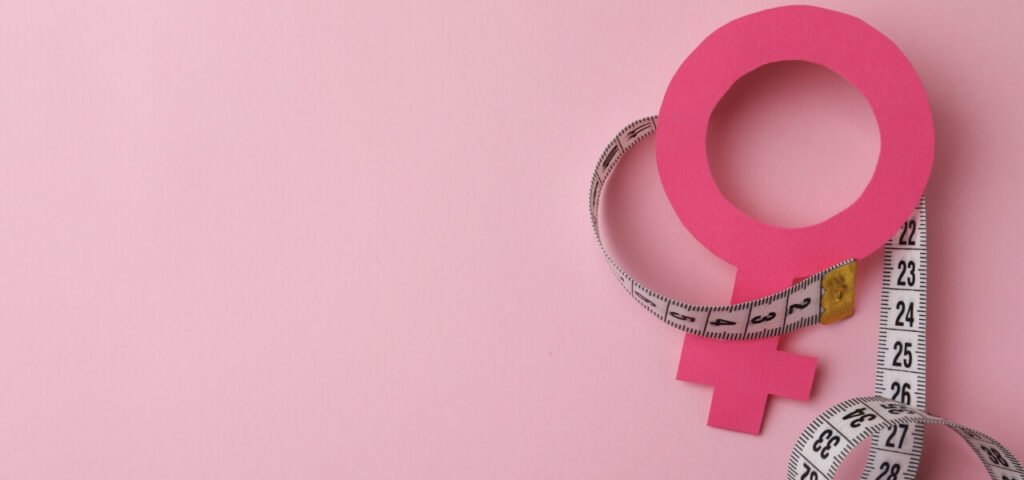Ever noticed the highs and lows you go through each month? Some days, you feel like conquering the world, while the other days, just going to work is a struggle! It is all thanks to your menstrual cycle.
During the entire menstrual cycle, you face mood swings, energy level fluctuations, and appetite as well as creativity changes. So, it is logical to feel differently at each stage of your cycle. This doesn’t mean you have to give up your workout or not maintain a routine. Knowing your cycle and how each stage affects you can actually help you build a healthy and effective exercise regime.
There are two major stages that our cycle is divided into: the first half (follicular stage) and the second half (luteal stage). These are further categorized into two more stages, which we will dive into in a moment.
Typically, during the first stage, you have a boost of energy due to increased estrogen levels, while the second stage is where things start to take a turn and your energy levels drop. However, there is still a lot to do during each stage if you are prepared for it. Luckily, this guide will help you with your menstrual cycle workouts, so let’s check out what is happening to our bodies each month and the exercises that will help us in the process.
Getting to Know Your Cycle: Syncing Your Cycle with Exercise!
An average cycle is about 28 to 35 days long, depending on the individual. Here is an in-depth guide to exercises during each menstrual phase.
Menstrual, Follicular, Ovulatory and Luteal. Each phase comes with changes that can affect the body in different ways.
-
Menstrual Phase (Days 1-5):
The first day of your period also counts as the first day of your cycle. During this phase the lining of your uterus is shedding, estrogen and progesterone levels are at the lowest and due to blood loss, you will experience getting tired easily. This stage lasts three to seven days, and the hormonal levels increase as you move further along in the cycle.
-
Follicular Phase (Days 6-14):
The follicular phase begins on the first day of your period, goes on around 5 to 6 days after your period, and lasts till the next phase begins, which is ovulation. During the follicular stage, after you are done with your period, your body produces luteinizing and follicle-stimulating hormones, which are an indication for your ovaries to produce an egg.
After menstruation ends, estrogen and energy levels are the highest since your body is being prepared to release an egg. Now is the time you can challenge yourself with intense exercises. -
Ovulatory Phase (Day 14):
Right after the follicular phase, the ovulation phase begins. This is when your body releases an egg; this phase lasts up to 3 to 5 days, and the estrogen levels are still high. However, around this time, you should start listening to your body again. According to research, the neuromuscular control is decreased, which makes you prone to more injuries.
-
Luteal Phase (Days 15-28):
The luteal phase is the second half of your menstrual cycle from day 18 to 30, depending on each cycle. During the first half of this phase, your body will have the energy from the ovulation phase, but this will decrease as the cycle moves towards its end.
Towards the end, before your period and next cycle begins, you may also experience PMS symptoms. These symptoms include bloating, nausea, tender breasts, headache, body aches, mood swings, breakouts, etc.Understanding how hormonal fluctuations affect your body and mood is essential when tailoring your workouts to match your cycle.

Track Your Cycle – Synchronize with Your Body!
It is a fact that each cycle is unique, and the only way to feel more comfortable during each phase is to know what your body is saying. Instead of following a constant and hectic regime, track your cycle and map your workouts according to your specific needs.
Tracking your cycle means recording your mood swings, feelings, symptoms, etc., during each phase. Once you are completely in sync with your body, you can start using these phases to design your own menstrual cycle workouts and get the optimum results.
However, if your body doesn’t go through major energy dips and changes, then you can just continue doing the same intensity exercises throughout. There is no rule; just listen to your body!
Menstrual Cycle Workouts for Each Phase: Tailoring Your Exercise Routine
Menstrual Phase: Yoga and Stretching
Workout:
- Gentle yoga poses.
- Stretching exercises.
- Deep breathing and meditation.
Why: During this phase, it’s important to provide care for your body. Engaging in yoga sessions and incorporating stretching exercises can help alleviate cramps while promoting blood circulation.
Additionally, practising breathing techniques and meditation can effectively reduce stress levels. Induce relaxation.
Follicular Phase: High-Intensity Workouts
Workout:
- Cardio workouts (running, cycling).
- Strength training (weightlifting, resistance exercises).
- HIIT workouts.
Why: You can challenge yourself with high-intensity workouts as you enter the phase with increased energy and motivation.
This period is when your body is more efficient at building muscle, making it an ideal time for strength training exercises.
Ovulatory Phase: Power-Packed Exercises
Workout:
- HIIT workouts.
- Plyometrics (jumping exercises).
- Powerlifting.
Why: When estrogen levels peak during this cycle stage, you’ll experience enhanced strength and endurance.
Take advantage of these circumstances by exercising power-packed exercises that push your limits.
Luteal Phase: Balanced Workouts
Workout:
- Swimming.
- Cycling.
- Pilates.
- Balance and flexibility exercises.
Why: During this phase, it’s common to experience mood swings and fatigue.
To maintain fitness while minimizing risks of overexertion during this time frame, opt for moderate-intensity workouts that emphasize balance and flexibility.
Listen to Your Body: Individualized Adjustments
Remember, these suggestions offer a structure for exercise routines, but it is important to remember that each person’s body is different.
Take note of how you feel during your workouts, and don’t be afraid to make adjustments. If you have any health issues or specific conditions, it’s always an idea to seek personalized guidance from a healthcare professional.
Additional Tips: Nutrition, Hydration, and Rest
Similar to exercises, the body also needs some sources of nutrition more than others, depending on your cycle. Here is a brief overview of that.
Menstruation Phase: We all crave fried carbs and sweet things, but these kinds of foods will only worsen your period symptoms. So make sure you take iron-rich foods with more Vitamin C, K and Omega 3 fatty acids. Foods like Lentils, lean red meat, leafy vegetables, citrus fruits, blueberries, fish, eggs, etc.
Follicular phase: since you have an increased energy level during this phase, make sure to eat loads of complex carbs and proteins. Foods like quinoa, whole wheat, etc. And to balance the levels of increased estrogen, consider food like broccoli, fermented foods, healthy fats, etc.
Ovulation Phase: Estrogen levels are high during this phase as well, so make sure to eat foods that balance the levels of estrogen.
Luteal phase: The Luteal phase comes with PMS symptoms, so satisfy your sweet and salty cravings with nuts, fruits, dark chocolates, or crackers. Also, take complex carbs and fiber-rich foods.
This is also the stage where you must take hydration seriously, as low hydration can cause brain fog, which no one wants.
Final Words
The menstrual cycle can be hard on many, but with the right direction of exercise and nutrition, you can achieve good results. You should match your workout intensity to your varying energy levels instead of overdoing and straining yourself.
How do you manage your exercise routine throughout your menstrual cycle? Do you make the changes or exert yourself? How do you rest and comfort your body during difficult days? Tell us, we want to know!
Menstrual Cycle and Exercise Disclaimer:
The information provided in this blog post regarding exercise during the menstrual cycle is for general educational purposes only and is not intended as medical advice. While this content is authored by certified personal trainers, individual experiences with exercise and the menstrual cycle can vary widely. We encourage readers to consult with a healthcare provider before starting any new exercise program, particularly if you have concerns or conditions that may be affected by exercise. Listen to your body and consider seeking personalized advice from professionals familiar with your health history and current state.





